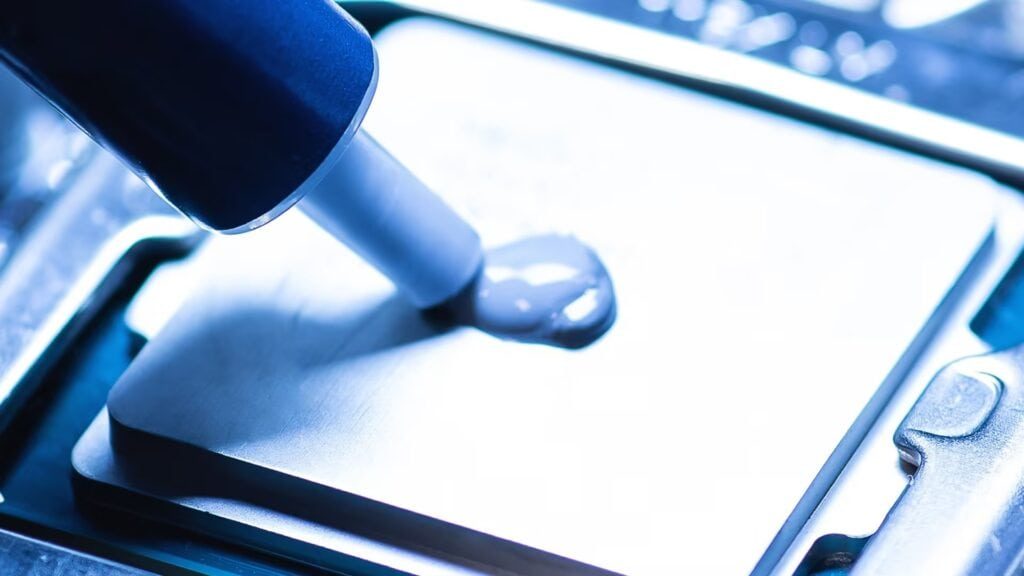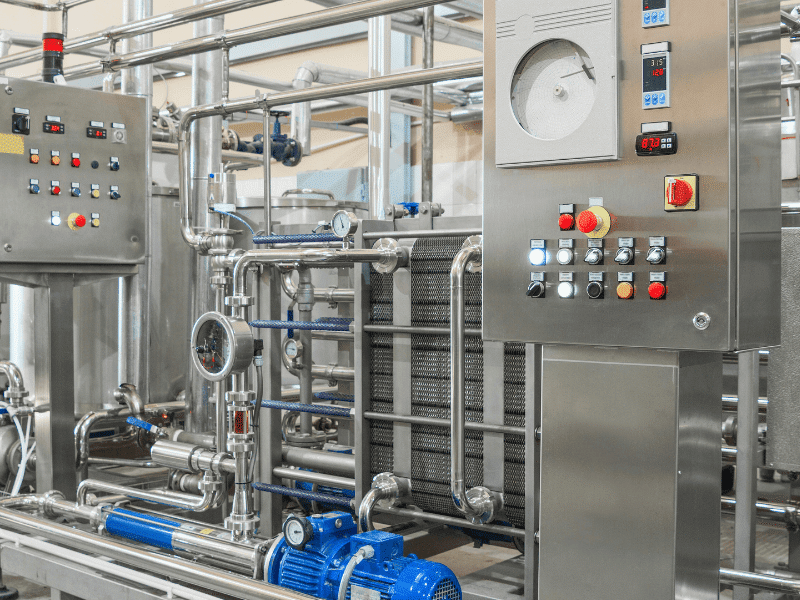Introduction
Heat pipe designs are completely exclusive to the usage and using the wrong type of heat pipe in your projects can lead to massive failures.
That is why this article is all about the understanding of heat pipe designs, which designs are appropriate for different applications, and how to choose the right design and heat pipe manufacturers from China.
What Are Heat Pipes?
Heat pipes are tiny cooling equipment that can run without electricity and provide massive cooling effects in heating gadgets.
These heat pipes are responsible for dissipating heat continuously from gadgets and machines wherever installed and keep them cool for efficient operation.
Importance Of Thermal Management With Heat Pipes
Heat pipes hold a very high importance in thermal management in almost every industry.
- Heat pipes are capable of dissipating severe amounts of heat from a gadget such as CPUs, battery packs, car engines, etc.
- Heat pipes keep the devices cool and ensure that the devices don’t fail or wear out due to excess heat.
- Heat pipes allow longevity of the devices by saving them from all the heat that those devices produce during operation.
How Are Heat Pipes Designed?
In the most basic sense, a heat pipe manufacturer will first choose the materials to be used in the manufacturing process. This depends on the thermal resistance required, client’s budget, application scenario, etc.
- A heat pipe has an outer casing, followed by a wick and a cooling liquid. The outer casing needs to be of the most accurate size and shape.
- The manufacturer will then install a wick around the inner walls of the heat pipe casing.
- Based on the design, the inner core of the heat pipe can consist of a reservoir, a channel for the liquid and vapors to flow, and a condenser, as needed.
- Finally, the manufacturer will test for any leakages and do a test run to make sure that the liquid and the vapours flow well and the heat is being dissipated nicely.
Heat Pipe Working Principle & Process
Key Components
In general we can expect the following components inside a heat pipe that are all made of different materials.
- Outer casing.
- Wick.
- Working fluid.
- Condenser.
- Reservoir.
The working process starts with a working fluid being stored inside the reservoir.
- When the outer casing becomes hot, the heat enters the heat pipe and evaporates the liquid.
- This liquid flows towards the condenser through the wick.
- The condenser cools down the liquid and the heat is dissipated from the other end of the heat pipe.
- The vapours condense back to liquid and travel towards the reservoir through the wick.
Advantages Of Heat Pipes
A heat pipe, in general, holds a lot of benefits over a traditional heatsink.
- Heat pipes can be oriented in different manners, which is not always possible and feasible in heatsinks.
- Heatpipes have no moving parts and hence they’re quieter than heatsinks.
- There is no need for a fan in a heat pipe, hence they are more compact than heatsinks.
- Heatpipes have a higher thermal resistance than heatsinks.
- We can design heat pipes in a number of shapes and sizes, which is not always possible with heatsinks.
Types Of Heat Pipes
- Heat Pipes With a Wick Structure
Most heat pipes have a wick and they are the most common types of heat pipes that are used in gadgets. The wick is the key component here where high pressure and low pressure keep on being created as the heat enters the heat pipe. It’s best used in EV battery packs, car engines, and PCs.
- Flat Heat Pipes
These heat pipes have a flat shape and hence, their surface area increases massively. They are mostly used in laptops where we need a flat heat pipe rather than cylindrical ones.
- Loop Heat Pipes
Loop heat pipes have a loop design where both the ends of the heat pipe are connected to each other and form a circuit, hence the name loop heat pipe. They’re ideal for small spaces where we don’t need to dissipate heat at a far away distance.
Heat Pipe Materials
Best Materials For Casing
The most common material is copper and sometimes aluminum (if the budget is low or we need low thermal conductivity).
Titanium and ceramic are used in extreme weather conditions and harsh environments such as space stations, satellites, or aeroplanes.
Carbon fiber can be used to achieve insulation properties and avoid risks of short circuit.
Best Materials For Wicks
Grooved wicks or sintered metal powder are the most ideal materials for making a wick. These materials make sure that the wick stays intact with the inner walls of the heat pipe and a constant creation of low and high pressures in the wick are facilitated.
Important Considerations In A Heat Pipe Design
- Shape & Size
The shape and size are the most important factors because we need to make sure that the heat pipes fit in the casing of our gadget. Right shape and size make sure that the heat pipe becomes compatible with other components in our gadget.
- Load Capacity & Thermal Resistance
Different materials used in the heat pipe contribute to their overall load capacity and thermal resistance. If you need low thermal resistance and load capacity, then aluminum is the best choice otherwise copper, titanium or stainless steel will give you a higher load capacity and thermal conductivity.
- Fluid Selection
Usually, water is the most common fluid used in the heat pipes but if you need better quality and performance then acetone, methanol, or even ammonia can be used.
- Pressure & Vacuum
We need to determine how much pressure will be exerted on the heat pipe and alongside we also need to understand first how much vacuum will be created inside the heat pipe so that the right design can be selected.
Heat Pipe Applications
- Electronics Gadgets
Electronic gadgets include smartphones, tablets, PCs, servers, data centers, and even gaming consoles because all of them have CPUs that generate a lot of heat, especially high-end PCs and gaming consoles.
- Automotives
In automotives, we need heat pipes to keep our battery packs cool and even engines. While engines are cooled using coolants, a heat pipe is always a solid option. In eclectic vehicles, the battery packs need to be cooled to make them compatible in tropical regions as well.
- Space Technology
Satellites and space stations have an endless scope for heat pipes of various kinds because they all stay in space where they face harsh and extreme conditions including solar flares.
- HVACs & Renewable Energy Systems
Solar panels and energy generating systems create energy and a lot of heat. They need to be protected from sun and harsh weather conditions, hence heat pipes become a viable solution. Alongside, HVAC systems when equipped with heat pipes become efficient in their performance.
How To Design a Heat Pipe System?
- Gathering Client Requirements
First, understand the basic requirements- thermal conductivity, client’s budget, materials to be used, shape, size, where it will be used (applications), and load capacity.
- Mathematics & Calculations
Based on the initial requirements, we will calculate thermal conductivity needed, which is given as W/mK. Then heat transfer rate, which is h= q/(delta T).
Similarly more calculations will be done.
- Choosing The Type Of Heat Pipe
The type of heat pipe will be chosen such as flat heat pipe, vapour chamber, loop heat pipe, bendable or flexible heat pipe, or heat pipe with a heatsink.
Once decided, the manufacturer will proceed with the manufacturing process.
Key Challenges When Designing A Heat Pipe
- Lacking precision and wrong calculations of the shape and size can result in the heat pipe unable to fit in the device. In a nutshell, the overall geometry needs to be fine-tuned and calculated accurately.
- Any leakages even at a microscopic level can result in a useless heat pipe.
- Selecting wrong materials during the design phase can result in inefficient performance.
- It is important to know in advance whether the capillary action is needed or not, because a heat pipe that cannot facilitate capillary action restricts the orientation during its application.
- Choosing the wrong type of heat pipe can lead to disasters because different types of heat pipes are exclusive to different applications. For example, using a vapour chamber is not feasible in high-end PCs or gaming consoles.
Conclusion
Heat pipe design is one of the most critical phases when manufacturing a custom heat pipe for a client and that is why it is important to have a proper conversation and understand the custom requirements well in advance. Heat pipe design is a phase that consists of material selection, calculating various coefficients, calculating and fine-tuning geometry, and many more steps.That is why, you need a manufacturer with a high level of expertise and experience in this industry that can design the right heat pipe for your requirements at the most affordable price. That is where Jiuju tech comes into play, because it has decades of industrial experience and an excellent history of trusted clients and several success stories.





